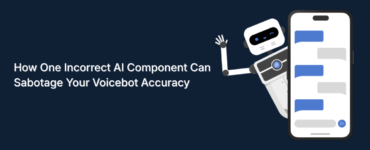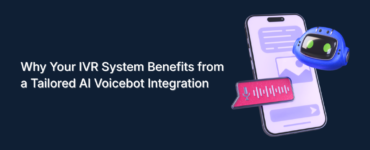Artificial intelligence (AI) has quickly become a centerpiece of modern business strategies. From customer service chatbots to predictive analytics, companies are investing heavily in AI to enhance customer experience and streamline operations. However, when it comes to AI and Customer Satisfaction, a critical question emerges: does more AI really translate into happier customers? The short answer is no. Simply adding layers of AI tools without a well-thought-out customer-centric strategy can backfire, leaving customers frustrated rather than satisfied.
In this article, we’ll explore why more AI doesn’t necessarily mean happier customers, the common pitfalls businesses face when deploying AI, and how companies can use AI strategically to truly enhance customer experience.
The Rise of AI in Customer Experience
The adoption of AI in customer service has been explosive. According to industry reports, over 80% of businesses are already using or planning to use AI-driven solutions for customer engagement. Companies are implementing chatbots, self-service platforms, voice recognition systems, and personalized recommendation engines, all with the intent of improving customer satisfaction.
The logic seems sound: AI offers scalability, efficiency, and cost reduction. Businesses can handle larger volumes of inquiries, reduce wait times, and provide 24/7 support. However, the assumption that more AI equates to better customer experiences overlooks a crucial reality—customers still value human connection, empathy, and understanding.
Why More AI Doesn’t Mean Happier Customers
While AI can be powerful, there are several reasons why simply increasing AI usage doesn’t guarantee happier customers.
1. Lack of Human Empathy
AI is excellent at recognizing patterns, providing quick answers, and processing massive datasets. However, it lacks empathy and emotional intelligence. Customers often reach out during moments of frustration or confusion, and in such scenarios, a scripted AI response can come across as cold or dismissive.
For example, if a customer is upset about a delayed delivery, they want acknowledgment of their frustration, not a generic line like, “I understand your concern. Your package will arrive in 2 days.” Empathy, tone, and reassurance are critical to diffusing tension—something AI still struggles to master.
2. Over-Automation Leads to Frustration
Too much reliance on AI can make customers feel trapped in endless loops of automated responses. Chatbots, for instance, often fail to resolve complex issues, forcing customers to repeat themselves or rephrase their queries multiple times. When escalation to a human agent is difficult or delayed, customer dissatisfaction increases.
Over-automation creates a perception that the company prioritizes efficiency over customer needs, which can harm trust and brand loyalty.
3. Loss of Personalization
Ironically, while AI is marketed as a personalization tool, excessive reliance can actually make interactions feel generic. Many AI-driven recommendations or scripted chatbot responses lack the depth of personalization that comes from truly knowing a customer.
For example, Netflix and Amazon use AI effectively to suggest content or products. But in industries like healthcare, finance, or travel, customers often need tailored advice and reassurance that goes beyond algorithmic predictions.
4. Technical Glitches and Limitations
AI is only as good as the data it is trained on. Poorly trained systems often produce inaccurate or irrelevant responses. Voice recognition tools may misinterpret accents. Chatbots may misclassify queries. Recommendation systems may push irrelevant products. These glitches frustrate customers, making them question the reliability of AI systems.
5. Erosion of Trust
When customers feel they are constantly interacting with machines instead of people, it can erode trust. They may feel the company is hiding behind technology rather than investing in genuine customer relationships. In industries where trust is paramount—such as banking, healthcare, and insurance—this can be particularly damaging.
The Balance Between AI and Human Touch
The key to successful AI deployment lies in balance. AI should complement human service, not replace it. The happiest customers often experience a seamless blend of AI-driven efficiency and human empathy.
Here are some strategies businesses can adopt:
1. Use AI for Routine, Human for Complex
AI is well-suited for handling routine queries like account balances, password resets, or order tracking. However, when issues are emotional, sensitive, or complex, human agents should step in. A tiered support system ensures that customers get quick answers when possible and empathetic support when needed.
2. Ensure Easy Escalation to Humans
Customers should never feel trapped in an AI system. Businesses must design frictionless ways for customers to reach human agents if AI cannot resolve the issue. This not only reduces frustration but also builds trust.
3. Invest in Human-AI Collaboration
Instead of replacing human agents, AI should empower them. AI can provide insights, summarize customer history, and suggest potential solutions, allowing human agents to focus on building rapport and solving nuanced problems.
4. Transparency with Customers
Customers appreciate honesty. Letting them know when they are interacting with AI helps manage expectations. If a chatbot introduces itself as AI but assures escalation to a human if needed, customers are more likely to trust the process.
5. Continuously Improve AI Systems
AI should evolve with customer needs. Businesses must constantly review AI interactions, train systems on new data, and fix recurring issues. A stagnant AI system quickly becomes obsolete and frustrating.
The Future of AI in Customer Experience
AI isn’t going anywhere—it will only become more advanced. Natural language processing, sentiment analysis, and predictive modeling are improving rapidly. But the future of customer experience doesn’t hinge on using more AI; it depends on using AI wisely.
The businesses that will thrive are those that:
- Prioritize customer-centric design over cost-cutting automation.
- Blend technology with empathy to create meaningful interactions.
- View AI as a tool, not a replacement for human relationships.
Ultimately, happier customers don’t come from more AI—they come from thoughtful, balanced experiences where AI enhances, but doesn’t overshadow, human connection.
Final Thoughts
“More AI” doesn’t automatically mean “better experiences.” In fact, excessive reliance on AI can leave customers feeling neglected, misunderstood, and frustrated. The winning formula lies in striking the right balance between automation and human interaction. Companies that understand this balance will not only boost customer satisfaction but also strengthen long-term loyalty.
AI is a powerful ally—but only when used strategically, with empathy and transparency at its core. Businesses that embrace this philosophy will prove that the future of customer experience is not just about technology, but about humanity enhanced by technology.
FAQs on Why More AI Doesn’t Mean Happier Customers
Q1. Why doesn’t adding more AI tools always improve customer satisfaction?
Because without balance and strategy, AI can lack empathy, create frustrating loops, and make interactions feel less personal.
Q2. What are the biggest drawbacks of overusing AI in customer service?
The main drawbacks include loss of human empathy, technical glitches, lack of personalization, and difficulty in escalating to real agents.
Q3. How can businesses balance AI and human support effectively?
By using AI for routine tasks while ensuring seamless access to human agents for complex or sensitive issues.
Q4. Can AI ever truly replace human empathy in customer experience?
No. AI can mimic empathy to some degree, but genuine understanding, emotional intelligence, and trust-building come from human interaction.
Q5. Which industries need to be most cautious about over-automation?
Industries where trust and sensitivity are critical, such as healthcare, finance, insurance, and travel, should use AI cautiously.
Q6. What’s the best way for companies to use AI without frustrating customers?
By designing transparent AI systems, offering easy human escalation, continuously improving AI performance, and ensuring customer-centric deployment.




